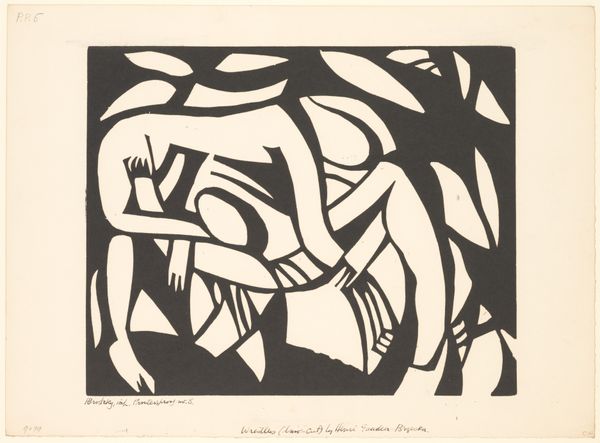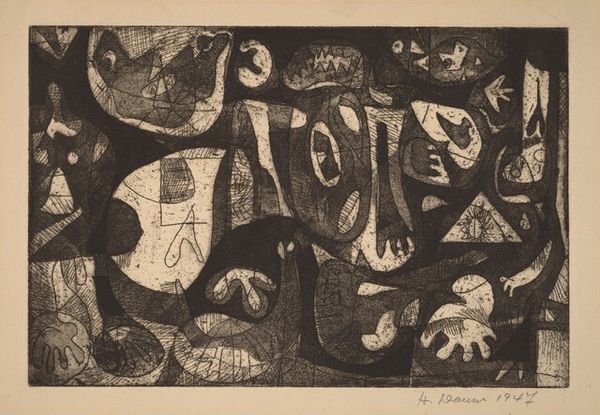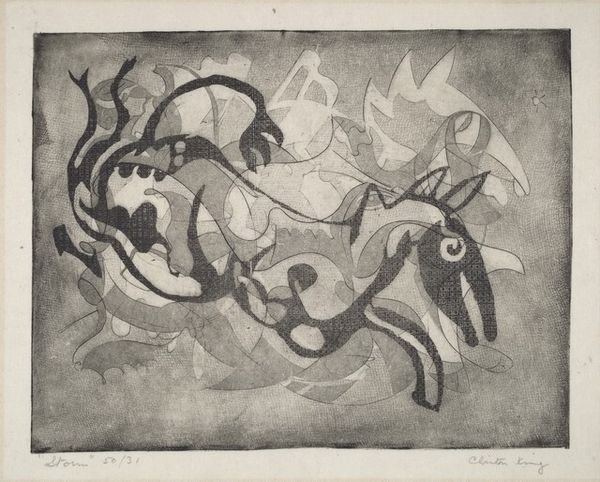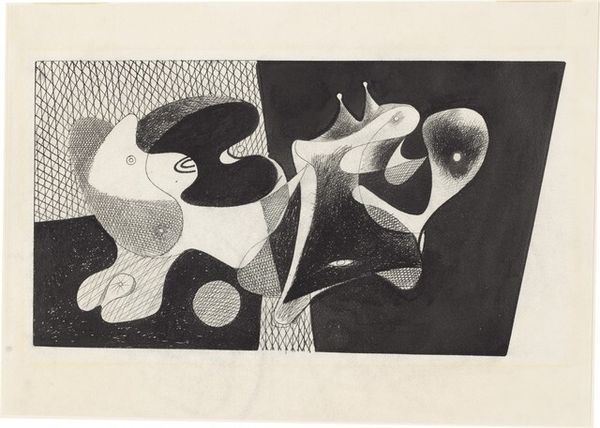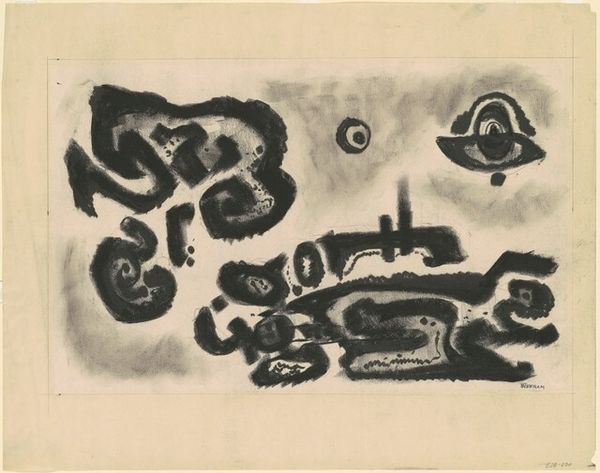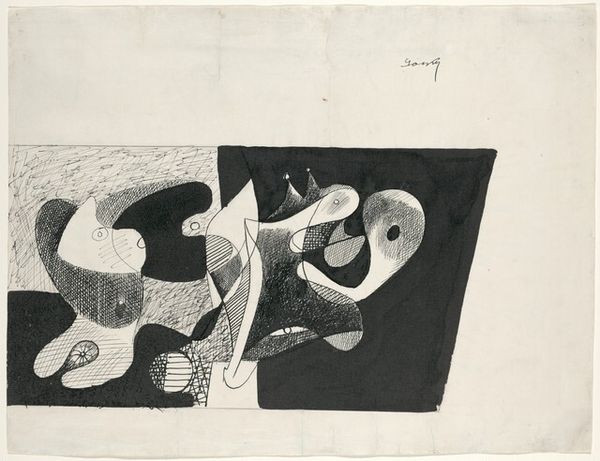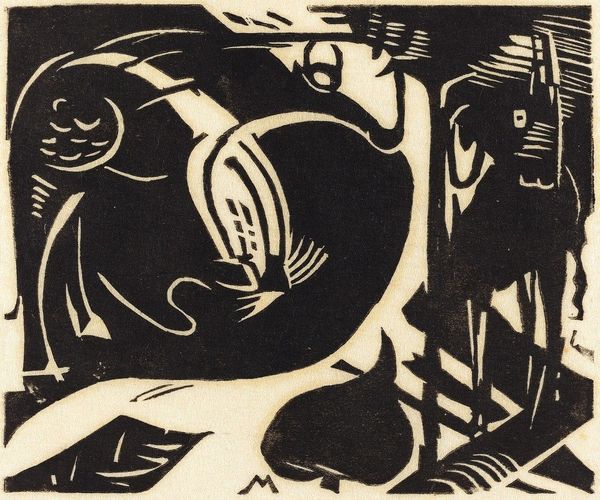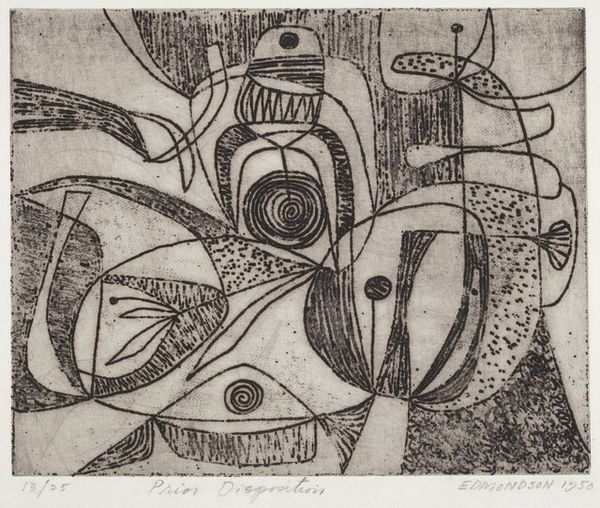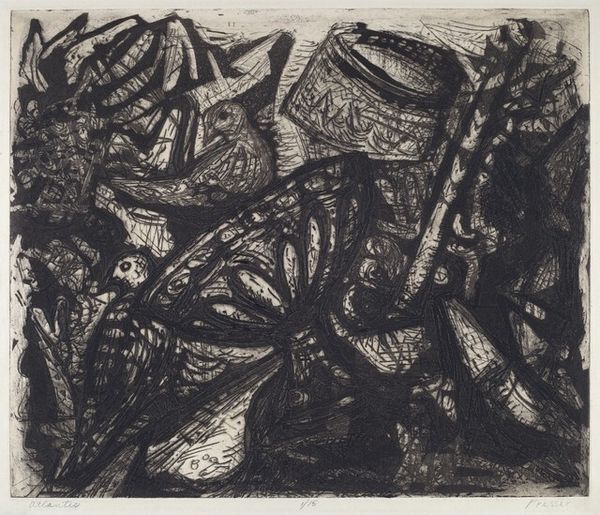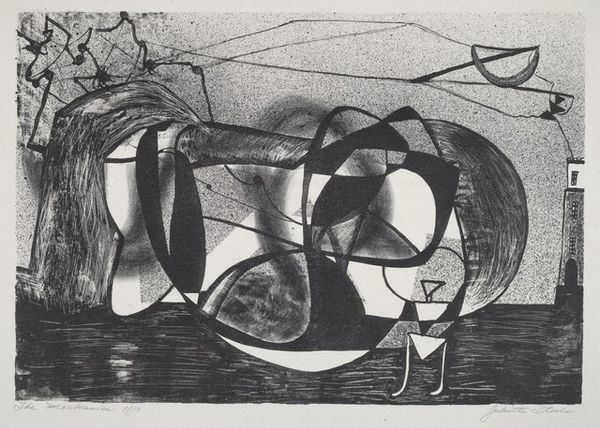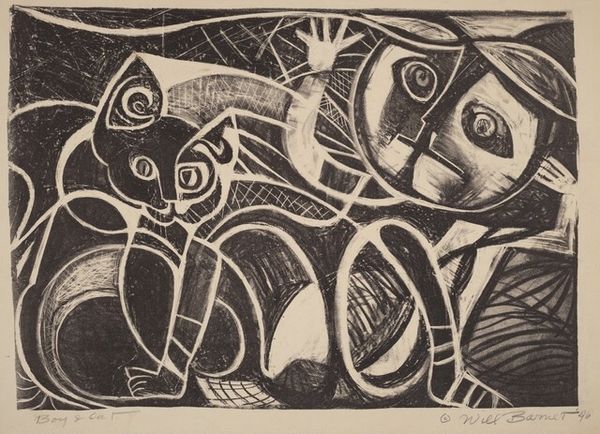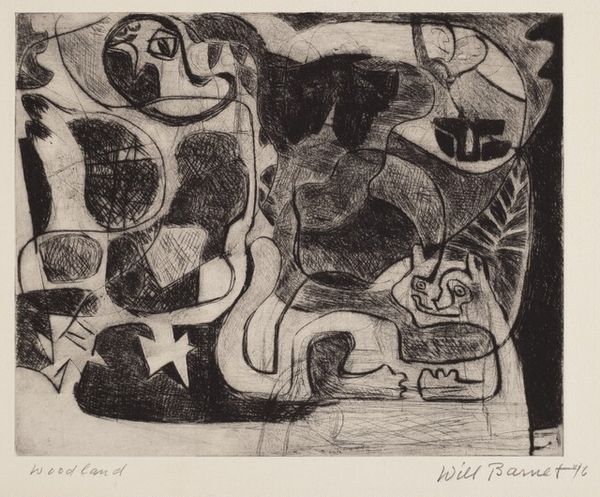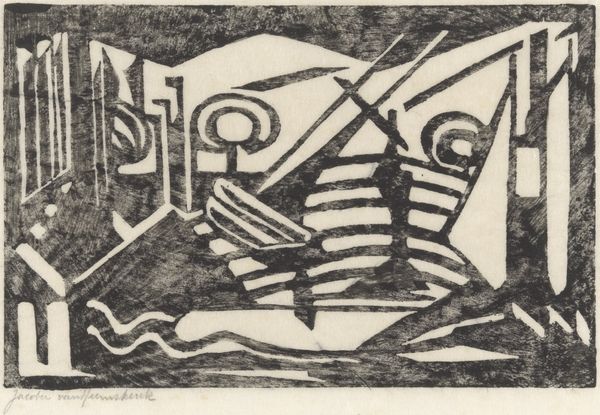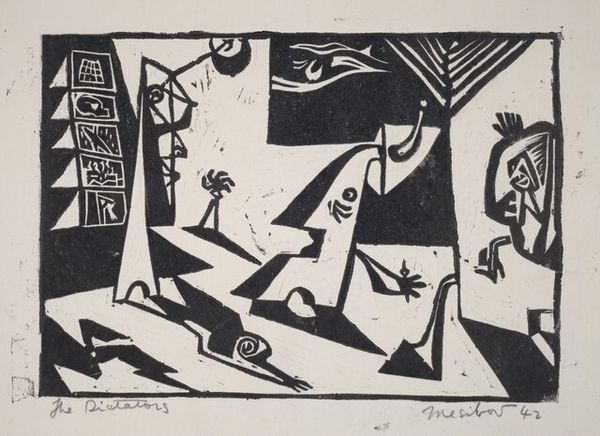
print, graphite
#
abstract-expressionism
#
ink drawing
#
non-objective-art
# print
#
form
#
geometric
#
abstraction
#
line
#
graphite
Dimensions: Sheet:278 x 216mm Image:253 x 192mm
Copyright: National Gallery of Art: CC0 1.0
Curator: Here we have an untitled abstraction, a print created by Walt Kuhlman in 1948. The medium looks like graphite, all lines and layered hatching in monochrome. What’s your immediate take on this composition? Editor: I find this stark contrast and dynamic tension almost unsettling. The amorphous forms feel like they’re fighting for space, and the limited palette amplifies the drama. It is all black and gray, no color whatsoever. Curator: Indeed. Kuhlman seems interested in the interplay between the organic and geometric, doesn’t he? Look at those bulbous shapes against the sharp angles; it's like a conversation about order versus chaos. The composition embodies so many dualities. It feels emblematic of the Abstract Expressionist movement. Do you find meaning in these forms? Editor: These forms make me reflect upon the post-war social climate, when people struggled to reorient themselves. The tension here seems representative of a desire to find new modes of self-expression at the end of such destructive times. The ambiguous forms reflect the anxieties of the era, don't you think? Curator: Certainly. One might consider these shapes as containers of emotional intensity—vessels brimming with anxieties or yearnings prevalent during the period, a kind of cathartic release. It also makes me think about Jung's theories; these could represent aspects of the subconscious mind bubbling to the surface. It's interesting how the lack of a clear subject pushes us towards psychological projection. Editor: Exactly, the socio-political context absolutely informed Kuhlman’s visual language. The deliberate "un-naming" of the piece, titled simply "Untitled," removes the directive authority from the artwork and leaves more room for interpretation. The formal experimentation here parallels larger social experiments in the reconstruction era. Curator: And thinking about reconstruction, maybe this abstracted form mirrors shattered perceptions, an attempt to reassemble something broken into something new—but with an awareness of its fractured history. Editor: That is insightful. It leaves us with a visual testament of transformation in an era searching for its footing. Curator: A powerful reminder that art can hold space for ambiguity while reflecting profound shifts in both the internal and external worlds. Editor: Yes, I agree; seeing it in this light shifts how I will approach art of this era moving forward.
Comments
No comments
Be the first to comment and join the conversation on the ultimate creative platform.
